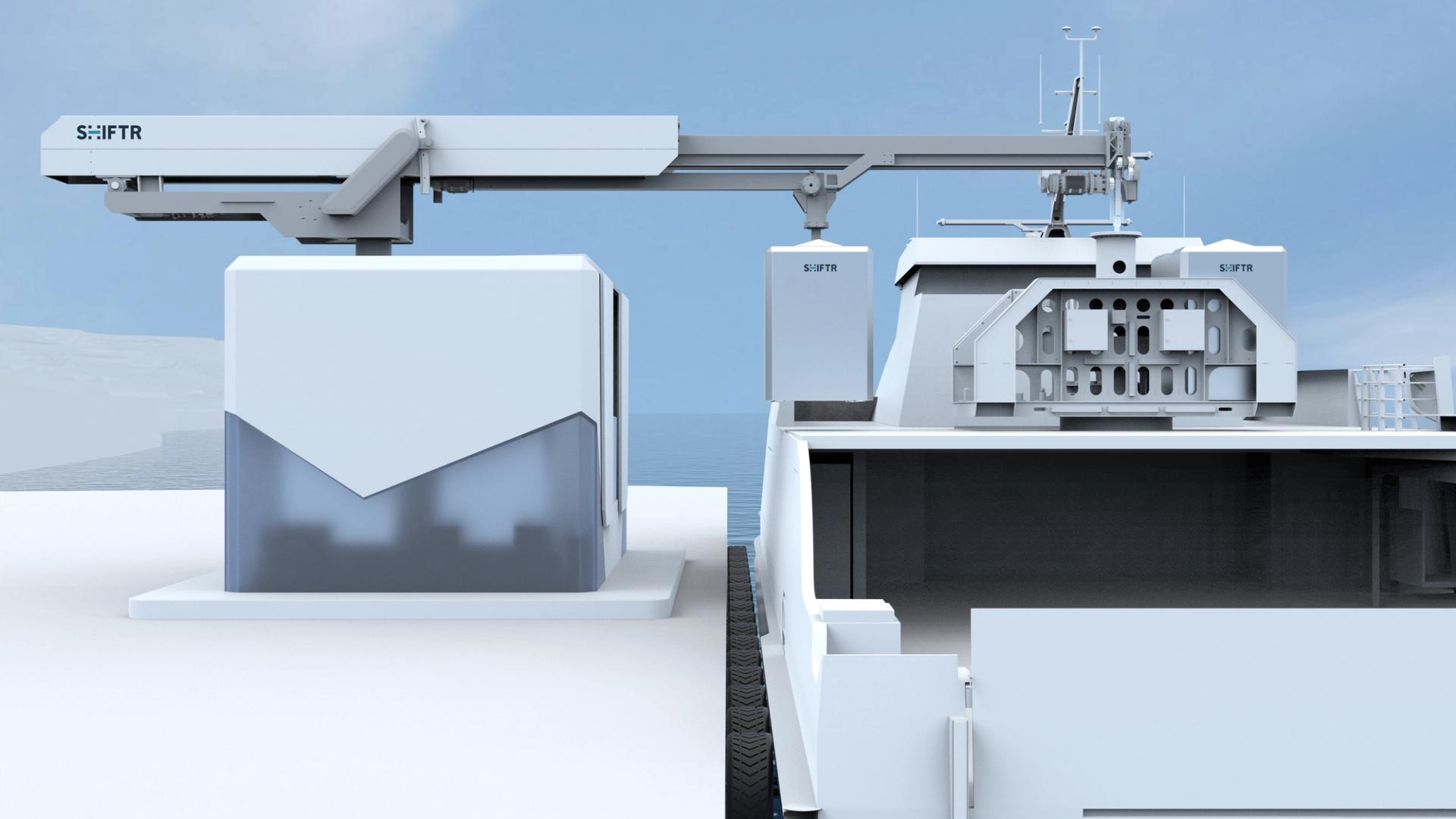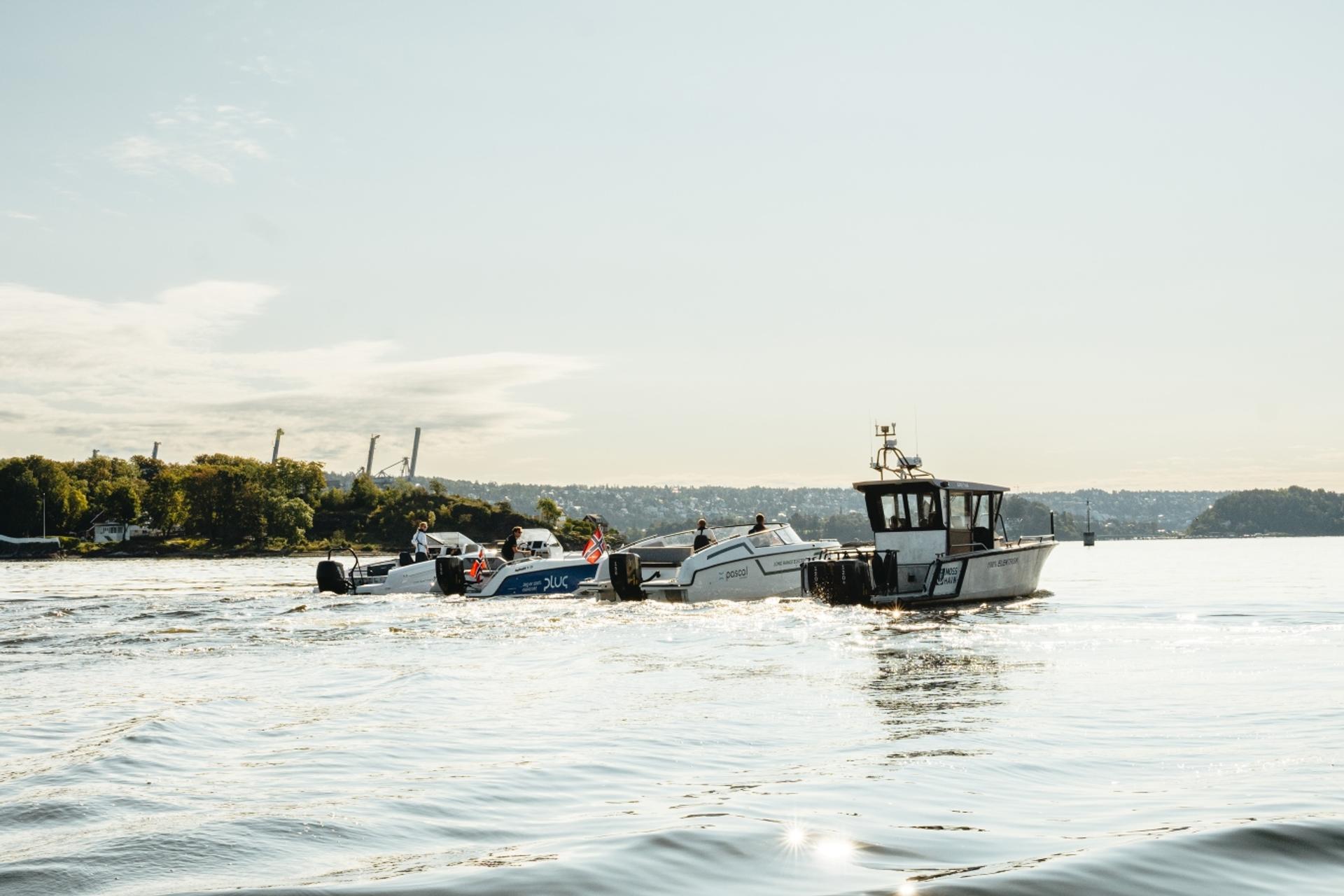Norway showcases award-winning electric ferry technology
Published 7 June 2023 (updated 2 June 2025) · 4 min read
While other countries are piloting electric ferries, Norway has been successfully operating these zero-emission vessels for several years now.
How did Norway sail so far ahead, so quickly?
The answer lies in Norway’s complete maritime ecosystem, relatively mature markets and technology, and synergistic public-private partnerships.
Today Norway boasts about 80 electric commuter ferries in operation. It designed, built and operates two global firsts: the world’s first all-electric ferry, MS Ampere, and the first high-speed electric ferry, MS Medstraum. In addition, the ferry company Bastø Fosen operates the world’s largest e-ferry across the Oslofjord’s busiest commuter route.
Norway’s electric ferry success began in 2015, when Ampere began transporting people across the Sognefjord in Western Norway. Owned and operated by Norled and designed and constructed by Fjellstrand, Ampere has received several international awards, including the Seatrade Clean Shipping Award in 2015 and the Ship Efficiency Award in 2018. It was also named Ship of the Year in 2014.
Fast forward to 2022, when a high-speed passenger ferry called Medstraum took its maiden voyage on a multi-stop commuter route between the city of Stavanger and the surrounding communities. Medstraum will reduce emissions in the region by 1 500 metric tons, the equivalent of taking 60 buses off the road. Like Ampere, it was named Ship of the Year, this time in 2022.
 Fjellstrand builds world’s first fully electric fast ferryFjellstrand delivers fully battery-electric fast ferries for passengers. The zero-emission solution drastically cuts greenhouse gas emissions and noise pollution from ferry transport. “We are the world’s first shipbuilder to prove that fast ferries can run completely on batteries,” says Edmund Tolo, R&D and Sales Manager at Fjellstrand.
Fjellstrand builds world’s first fully electric fast ferryFjellstrand delivers fully battery-electric fast ferries for passengers. The zero-emission solution drastically cuts greenhouse gas emissions and noise pollution from ferry transport. “We are the world’s first shipbuilder to prove that fast ferries can run completely on batteries,” says Edmund Tolo, R&D and Sales Manager at Fjellstrand. SHIFTR revolutionises fast ferries with autonomous battery swapSHIFTR delivers an autonomous battery swap solution for fast ferries, enabling the transition to electric operation with no change in service quality. “Our disruptive technology enables seamless, zero-emission fast ferry operation,” says Karolina Adolfsson, Head of Technical Innovation at Norled and Co-founder of SHIFTR.
SHIFTR revolutionises fast ferries with autonomous battery swapSHIFTR delivers an autonomous battery swap solution for fast ferries, enabling the transition to electric operation with no change in service quality. “Our disruptive technology enables seamless, zero-emission fast ferry operation,” says Karolina Adolfsson, Head of Technical Innovation at Norled and Co-founder of SHIFTR.
Culture of collaboration with Europe
Such a groundbreaking project requires the joining of innovative minds. Headed by Norwegians, the express ferry is the result of a European collaboration. “Medstraum is actually a European project. We have an international outlook and excel at cooperation,” says Kjell Arne Nielsen, Special Advisor on Green Maritime at Innovation Norway.
Medstraum emerged from the EU-funded TrAM project, initiated by the Norwegian industry cluster Maritime CleanTech. Fourteen European partners cooperated to create a zero-emission fast ferry through advanced modular production, reducing manufacturing and engineering costs. The partners came from Germany, Greece, the Netherlands, Norway and the UK. (See the partner list below.)
As a testament to collaboration, the TrAM project was nominated for the European Sustainable Energy Award for Innovation for 2023.

Public-private symbiosis spreads risk
As the TrAM project illustrates, private companies cannot develop green maritime solutions alone – at least not right now. They need government buy-in to realise pioneering projects. This is because costs and risks are inherently high.
In this case, the EU and Rogaland county, where Medstraum operates, were essential to the project’s success. “We needed to sell this ferry, so we had to keep the costs and risks to a minimum,” says Edmund Tolo, R&D/Sales Manager at Fjellstrand, which designed and built Medstraum.
Fortunately, public funding accelerated the process.
“The EU funding covered about 20 per cent of the building cost. On top of that, Rogaland county made an extraordinary financial commitment. Usually it is the shipowner that assumes the risk, but here Rogaland took some risk and the EU did as well. Without this public support, we could not have completed the ferry in a timely manner,” he adds.
Thanks to this public-private partnership, Kolumbus, the county’s public transport service, was able to purchase Medstraum in 2021 and begin operations in 2022.
 Green urban mobility with Zeabuz autonomous ferry conceptZeabuz autonomy solutions open a new world of waterborne urban transportation concepts, reducing congestion and emissions while promoting pedestrianism and biking.
Green urban mobility with Zeabuz autonomous ferry conceptZeabuz autonomy solutions open a new world of waterborne urban transportation concepts, reducing congestion and emissions while promoting pedestrianism and biking. Evoy accelerates the transition to electric boatsEvoy designs, develops and delivers powerful, fully electric motor systems for fast boats. “Evoy’s vision is to eliminate boating emissions,” says Leif A. Stavøstrand, CEO of Evoy. “We want to bring boating to a whole new level, with no sound, fumes or breakdowns.”
Evoy accelerates the transition to electric boatsEvoy designs, develops and delivers powerful, fully electric motor systems for fast boats. “Evoy’s vision is to eliminate boating emissions,” says Leif A. Stavøstrand, CEO of Evoy. “We want to bring boating to a whole new level, with no sound, fumes or breakdowns.”
Stronger political action needed
Norway’s e-ferry experience shines a light on the key challenges. “The major obstacles are the cost of the vessel and weight of the batteries. Access to infrastructure and a cumbersome tendering process may also impede progress,” says Kjell Arne Nielsen at Innovation Norway.
Edmund Tolo at Fjellstrand agrees: “The biggest problem is that it’s still more expensive to build battery ferries than diesel ferries.” Moreover, he has some definite ideas on how to solve this:
“It’s up to the politicians. It must be cheaper to choose battery over diesel, so two things need to happen. The government must require all newbuilds to be emission free and it must provide incentives to make electric ferries less expensive, as Norway did with EV cars.”
The ultimate goal, of course, is to create a robust market by increasing volume and decreasing costs.
Market demand grows from sticks and carrots
Demand for electric passenger ferries is increasing worldwide as the EU, the International Maritime Organization (IMO) and individual countries set climate targets and impose regulations. Along these lines, the Norwegian Ministry of Climate and the Environment has proposed a zero-emission requirement for high-speed ferries as from 2025.
If regulations are sticks, then tech advancements are carrots, fuelling demand in positive ways. Electric ferries are increasingly clean, quiet, smart, comfortable and efficient. Given this, it’s no surprise that the global market for electric vessels is projected to reach USD 14.2 billion by 2030, up from USD 3.3 billion in 2022.
One Norwegian company embodies the excitement of what e-ferries will soon become. Building on 35 years of product innovation and performance boat manufacturing at Eker Group, Hyke makes small, nimble ferries for urban mobility. The ferries feature an electric powertrain, built-in solar panels and automatic, high-power charging. Notably, every vessel comes autonomy-ready. The ferry is so groundbreaking that it was named to Time Magazine’s list of “Best Inventions of 2022”.
One of Hyke’s goals is to help to create more liveable and enjoyable cities. “We are seeing the revival of waterways as a medium for urban mobility, tourism and logistics. Our mission is to help cities to accelerate this transition by providing an integrated waterborne mobility solution, making waterborne travel cooler, cleaner and more efficient for all,” says CEO of Hyke, Bjørn Utgård.
Tolo sees great promise for the future of Hyke, Fjellstrand and all electric ferry suppliers. “I’m sure that electric ferries will take over the market for short routes. We will also see more electric ferries on longer, coastal routes,” he concludes.
Video of all-electric MS Brisen, ©Brim Explorer



